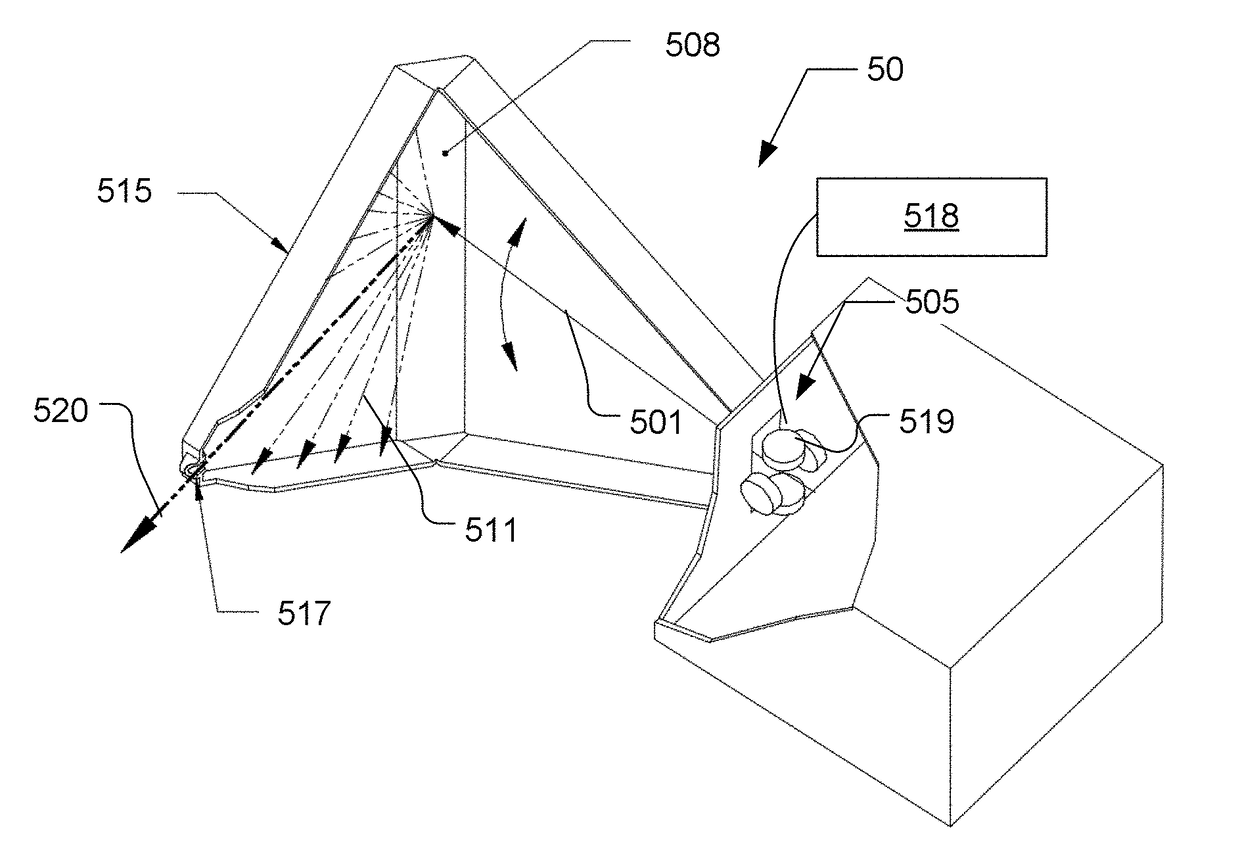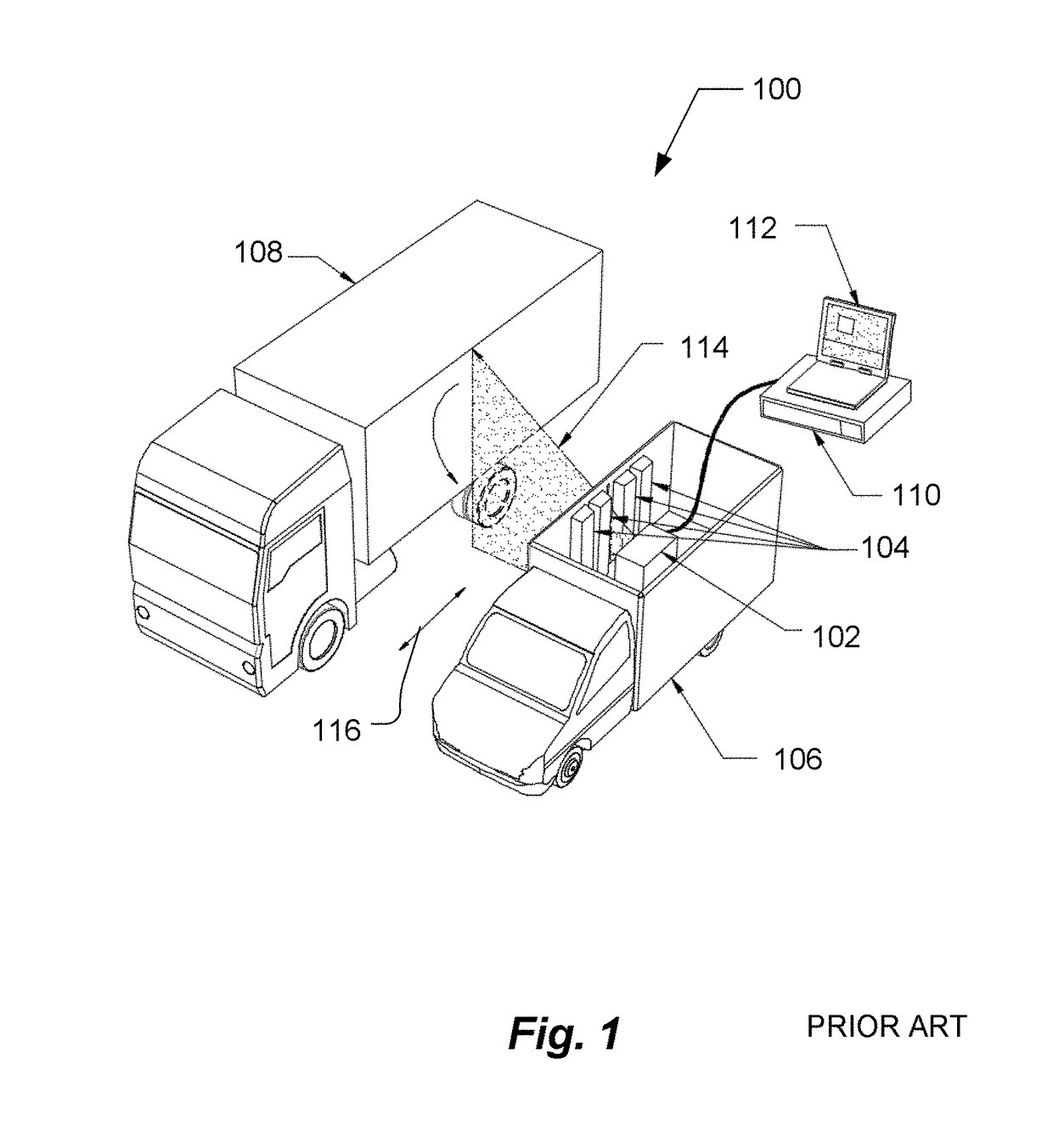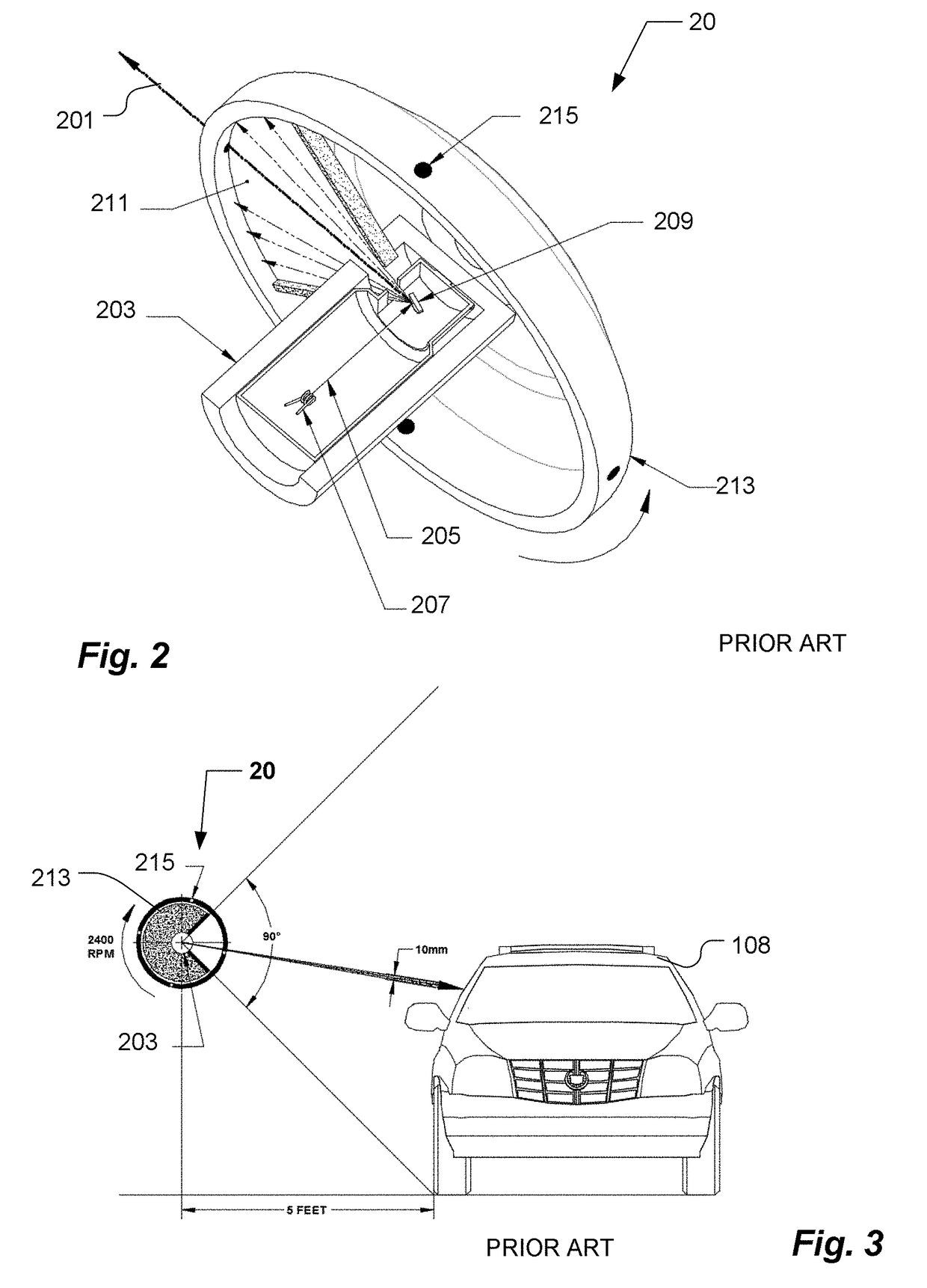Backscatter Characterization Using Interlinearly Adaptive Electromagnetic X-Ray Scanning
a backscatter and adaptive technology, applied in the direction of material analysis using wave/particle radiation, instruments, handling using diaphragms/collimeters, etc., can solve the problems of more than 50% of the beam being wasted, scanning air, and inability to obtain more than a single imag
- Summary
- Abstract
- Description
- Claims
- Application Information
AI Technical Summary
Benefits of technology
Problems solved by technology
Method used
Image
Examples
example 1
ting the Secondary View on a Specific Area
[0079]Inspectors may want enhanced images of a specific portion of all trucks. FIG. 6B shows the EMS scanning a 14 foot high tractor-trailer traveling at 12 kph at 7 feet distance from the snout 515 of the EMS 50. During the scan of the tractor, the beam height and intensity are easily adjusted to fit the size and maximum radiation dose. During the scan of the trailer, the single drive-by produces two independent views: a primary image of the entire trailer and an improved secondary image of the cargo in the bottom half of the trailer's interior. In this example, the semi has moved 3.3 mm during the 2 millisecond full sweep of the 14 foot height. The Rommel aperture 517 (shown in FIG. 5A), set at 1 mm diameter, produces stripes of pixels that are 7 mm wide. The odd numbered sweeps, called the Primary Sweeps along a Primary scan path 630, abut. The Primary sweeps alone produce an image of a fully scanned trailer. Alternating sweeps are now di...
example 2
Dual-Channel Snout to Improve Resolution
[0081]Snouts 720 of each of FIGS. 7B-7D have separate Rommel collimators 517 in each of two channels A and B, and can be used to obtain two independent views by alternating the scans of electron beam 501 such that that the odd-numbered x-ray beams 741 go through Channel A and the even numbered x-ray beams 742 go through Channel B, to produce different pixel energies, resolution or pixel intensity, as the case may be. Such a snout may be referred to as a “dual-channel snout,” or, alternatively, as a “two-channel snout.” Snouts with more than a single channel may be referred to as “multi-channel snouts.”
example 3
ng False Alarms from External Plastic
[0082]The backscatter (BX) inspection of vehicles, in the search for explosives or drugs, encounters serious difficulty distinguishing potential contraband inside the car's steel body from light element materials, such as plastic and carbon fiber, that may compose part of the outside of the vehicle. An EMS 50 in accordance with one of the embodiments of the present invention, may advantageously eliminate the false alarms by sending the ΔT(P) beams through channel A of FIG. 7B, and the alternate beams ΔT(S) through the channel B of FIG. 7B, which has a filter 750. Filter 750 may strongly absorbs x-rays below about 70 keV, for example. Thus, a car 108 may be scanned twice, where each scan is complete and provides spectral resolution. Comparing the intensity of the pixels in the image composed of x-rays through channel A, with the corresponding intensities in the image composed of x-rays through B, uniquely identifies whether a light element materia...
PUM
 Login to View More
Login to View More Abstract
Description
Claims
Application Information
 Login to View More
Login to View More - R&D
- Intellectual Property
- Life Sciences
- Materials
- Tech Scout
- Unparalleled Data Quality
- Higher Quality Content
- 60% Fewer Hallucinations
Browse by: Latest US Patents, China's latest patents, Technical Efficacy Thesaurus, Application Domain, Technology Topic, Popular Technical Reports.
© 2025 PatSnap. All rights reserved.Legal|Privacy policy|Modern Slavery Act Transparency Statement|Sitemap|About US| Contact US: help@patsnap.com



